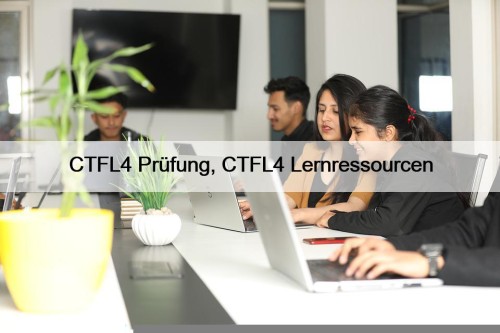Most Popular
 Do You Want To Pass Salesforce Marketing-Cloud-Administrator Exam Successfully And Effectively
Do You Want To Pass Salesforce Marketing-Cloud-Administrator Exam Successfully And Effectively
Our Marketing-Cloud-Administrator practice materials are suitable for a variety of ...
 Latest 3V0-42.23 Exam Materials: VMware NSX 4.x Advanced Design give you the most helpful Training Dumps
Latest 3V0-42.23 Exam Materials: VMware NSX 4.x Advanced Design give you the most helpful Training Dumps
The VMware NSX 4.x Advanced Design (3V0-42.23) product can be ...
 CTFL4 Prüfung, CTFL4 Lernressourcen
CTFL4 Prüfung, CTFL4 Lernressourcen
Wir It-Pruefung bieten Ihnen die umfassendsten BCS CTFL4 Dumps mit ...



First-grade 4A0-112 Exams Torrent Provide Prefect Assistance in 4A0-112 Preparation

This society is ever – changing and the test content will change with the change of society. You don't have to worry that our 4A0-112 study materials will be out of date. In order to keep up with the change direction of the exam, our question bank has been constantly updated. We have dedicated IT staff that checks for updates every day and sends them to you automatically once they occur. The update for our 4A0-112 Study Materials will be free for one year and half price concession will be offered one year later.
The Nokia 4A0-112 exam is comprised of 60 multiple-choice questions and has a duration of 90 minutes. To prepare for 4A0-112 exam, candidates must have a thorough understanding of the principles and concepts of the IS-IS routing protocol, as well as the skills necessary to configure, troubleshoot, and optimize its performance. Nokia provides resources, such as official training courses and guides, to help candidates prepare for the Nokia 4A0-112 Exam.
Free 4A0-112 Exam Questions Updates By Itcerttest
We ensure that if you fail to pass your exam by using 4A0-112 exam materials of us, we will give you full refund, and the money will be returned to your payment account. Besides, we are pass guarantee, if you choose us, you can pass the exam, otherwise we will give you refund. 4A0-112 exam materials cover most of knowledge points for the exam, and you can master the major knowledge points for the exam as well as improve your professional ability in the process of training materials. In order to let you know the latest information for the exam, we offer you free update for one year for 4A0-112 Exam Dumps.
Nokia 4A0-112 exam focuses on the Nokia IS-IS routing protocol, which is an essential aspect of network routing. 4A0-112 exam aims to validate your skills and knowledge in configuring, monitoring, and troubleshooting the Nokia IS-IS routing protocol. Passing 4A0-112 Exam is essential for network engineers who want to design and manage complex networks using Nokia's networking solutions.
Nokia IS-IS Routing Protocol Sample Questions (Q17-Q22):
NEW QUESTION # 17
A routing domain is using a single-area link-state routing protocol. Which of the following is NOT information that a router can share with other routers in the domain using protocol-specific messages?
- A. A copy of the local routing table.
- B. The IP prefixes of subnets directly attached to the router.
- C. The local router ID and the router IDs of neighboring routers.
- D. IP prefixes known by the router because it is running ad additional routing protocol.
Answer: A
Explanation:
In a single-area link-state routing protocol (such as OSPF), routers share specific information about the network topology, not their entire routing table. They exchange link-state advertisements (LSAs) that contain information about their directly connected interfaces and their state, allowing other routers to build a consistent view of the network.
NEW QUESTION # 18
A router running a link-state routing protocol detects that one of its neighbors is no longer connected to it. The router generates a new link-state advertisement to inform other routers of the topology change. Which of the following is NOT an action that is triggered by this event?
- A. If a router receives multiple copies of the new link-state advertisement, it will simply ignore all copies received after the first one.
- B. If a router receives the new link-state advertisement, it acknowledges it, stores it, and forwards it to its own neighbors.
- C. Every router that receives the new link-state advertisement runs the SPF algorithm to recalculate its shortest-path tree and its forwarding database.
- D. Every router that receives the new link-state advertisement updates its age field before forwarding it.
Answer: D
Explanation:
When a router receives a link-state advertisement (LSA), it does not update the age field before forwarding it. The age field in an LSA is typically updated by the originating router or during the process of forwarding the LSA within the network. Routers do not modify the age field upon receiving and forwarding an LSA.
NEW QUESTION # 19
Refer to the exhibit.
Routers R1 through R4 in the diagram have established IS-IS adjacencies. Router R1 is L1/L2 and is the DIS of its two broadcast interfaces. How many LSPs will it generate?
- A. 0
- B. 1
- C. 2
- D. 3
Answer: A
Explanation:
Router R1 is configured as L1/L2, meaning it is part of both Level 1 and Level 2 IS-IS routing areas. This means R1 will generate two types of LSPs:
Level 1 LSP (for the local area 49.0001) to advertise its local topology to other Level 1 routers.
Level 2 LSP (for the backbone area 49.0002) to advertise the global network topology to Level 2 routers.
R1 also has two broadcast interfaces, and as the Designated Intermediate System (DIS) on these interfaces, it will generate an LSP for each interface (one per broadcast link).
This results in three total LSPs:
A Level 1 LSP for the local area (49.0001).
A Level 2 LSP for the backbone area (49.0002).
An LSP for each of the two broadcast interfaces, which may include interface-related topology information.
NEW QUESTION # 20
Refer to the exhibit.
All routers in the diagram are running a link-state routing protocol. Before the link failure, all routers have operational adjacencies with each other and there is a BFD session between routers R1 and R3. After the link failure, which of the following affects the routing protocol's convergence time?
- A. The value of the routing protocol hello timers on routers R1 and R3.
- B. The value of the BFD transmit interval, receive interval and multiplier settings on routers R1 and R3.
- C. The time taken by the switches to detect that the physical ports are down.
- D. The value of the Ethernet hello timers on the switches.
Answer: B
Explanation:
BFD (Bidirectional Forwarding Detection) is used to detect link failures quickly and helps improve convergence time in link-state routing protocols. The BFD session between routers R1 and R3 allows them to detect the failure of the link between them more quickly than the regular routing protocol hello timers. The transmit interval, receive interval, and multiplier settings determine how fast BFD detects a failure and triggers the routing protocol to converge, which directly impacts the convergence time.
NEW QUESTION # 21
Refer to the exhibit.
Examine the physical topology of the IS-IS network, the metrics of the links and the levels of the routers. All routers have their system interfaces included in IS-IS. Which of the following statements describes the route-table entry that router R4 will use to reach the system IP address of router R6?
- A. Router R4 will have a default route with router R3 as the next-hop.
- B. Router R4 will not have a matching entry in its routing table for router R6's system IP address.
- C. Router R4 will have a route to router R6's system IP address with router R2 as the next-hop.
- D. Router R4 will have a default route with router R2 as the next-hop.
Answer: C
Explanation:
Router R4 is in Area 49.0001 and R6 is in Area 49.0002. Both routers are Level 2 (L2), meaning that they can communicate across areas using Level 2 IS-IS routing.
Since R2 is the L1/L2 router that connects both Area 49.0001 and Area 49.0002, it will be the next-hop for router R4 to reach R6's system IP address.
The IS-IS protocol will ensure that R4 will have a route to R6's system IP address via R2 as the next-hop.
NEW QUESTION # 22
......
Exam 4A0-112 Revision Plan: https://www.itcerttest.com/4A0-112_braindumps.html
- 4A0-112 Reliable Test Answers 🕖 4A0-112 New Dumps Questions ⌨ 4A0-112 Reliable Test Review 💮 Open website ⇛ www.examdiscuss.com ⇚ and search for ▛ 4A0-112 ▟ for free download 🌼4A0-112 New Dumps Questions
- Perfect Nokia 4A0-112 Exams Torrent - 4A0-112 Free Download ⛄ Open website ➽ www.pdfvce.com 🢪 and search for ⮆ 4A0-112 ⮄ for free download 💒Valid Test 4A0-112 Tutorial
- 4A0-112 Reliable Test Tips 🤳 Latest 4A0-112 Test Testking 🕌 Valid Test 4A0-112 Tutorial 🐗 Search for ⏩ 4A0-112 ⏪ and easily obtain a free download on ▶ www.examcollectionpass.com ◀ 🌆Free 4A0-112 Pdf Guide
- Free PDF 2025 Nokia 4A0-112: Latest Nokia IS-IS Routing Protocol Exams Torrent 🔨 Search for 「 4A0-112 」 and obtain a free download on 《 www.pdfvce.com 》 🌶Exam 4A0-112 Tests
- Exams 4A0-112 Torrent 👭 Valid Test 4A0-112 Tutorial 🌈 4A0-112 Training Courses 💾 Open ☀ www.exams4collection.com ️☀️ and search for ➽ 4A0-112 🢪 to download exam materials for free 🎩Exams 4A0-112 Torrent
- Pass Guaranteed 4A0-112 - Useful Nokia IS-IS Routing Protocol Exams Torrent 🍬 Easily obtain free download of { 4A0-112 } by searching on { www.pdfvce.com } 😟4A0-112 Reliable Test Tips
- 4A0-112 Training Courses 🚡 Latest 4A0-112 Exam Guide 🤼 4A0-112 Valuable Feedback 🕖 Search for ➥ 4A0-112 🡄 on ➽ www.examsreviews.com 🢪 immediately to obtain a free download 🍋Certification 4A0-112 Dumps
- Perfect Nokia 4A0-112 Exams Torrent - 4A0-112 Free Download 🛒 Search for ➽ 4A0-112 🢪 on ➠ www.pdfvce.com 🠰 immediately to obtain a free download 🤯4A0-112 Reliable Test Tips
- Latest 4A0-112 Exam Guide ☁ 4A0-112 New Dumps Questions 🔳 4A0-112 New Dumps Questions 🎥 Search for ➤ 4A0-112 ⮘ and download exam materials for free through [ www.exams4collection.com ] 🐍Latest 4A0-112 Exam Guide
- 4A0-112 Exams Torrent - Nokia 4A0-112 First-grade Exam Revision Plan 🅿 Search for ▶ 4A0-112 ◀ and easily obtain a free download on ( www.pdfvce.com ) 👰Certification 4A0-112 Dumps
- 4A0-112 Exams Torrent - Nokia 4A0-112 First-grade Exam Revision Plan 🔛 Go to website ➥ www.pdfdumps.com 🡄 open and search for ➤ 4A0-112 ⮘ to download for free 💱4A0-112 Reliable Test Review
- 4A0-112 Exam Questions
- berrylearn.com course.fallmodz.in billhil406.blogdanica.com dotwordtechnicalcollege.com.ng courses.digitalrakshith.com www.medicalup.net amarexam.com www.shiguc.com latifaalkurd.com iachm.com
Tags: 4A0-112 Exams Torrent, Exam 4A0-112 Revision Plan, 4A0-112 Valid Test Objectives, 4A0-112 Exam Pass Guide, 4A0-112 PDF